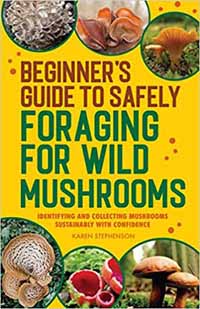

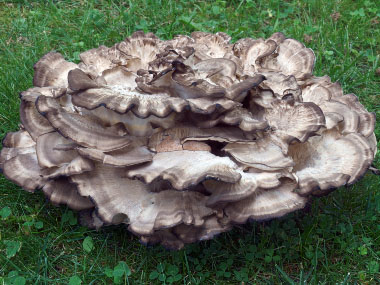
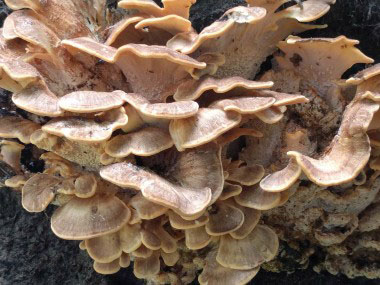
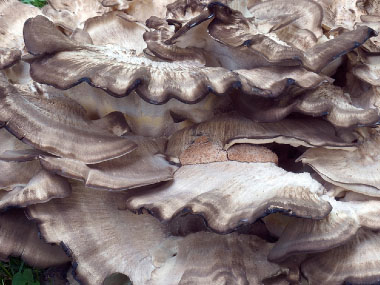
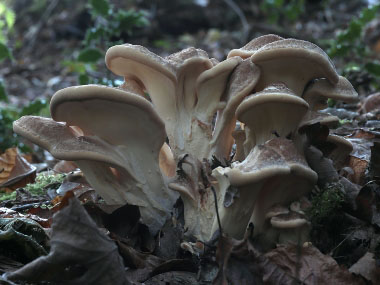
Do not eat any fungi that has not been properly identified by a qualified professional, some are DEADLY when ingested. All edible wild fungi MUST be cooked.
Black Staining Polypore is an edible mushroom that grows similar to the Hen-of-the-Woods. Both species are brownish by maturity and both fruit near the bases of hardwoods in large clusters. However, the Hen-of-the-Woods has small caps and a pore surface that is initially lavender grayish, and Black Staining Polypore has larger caps and its pore surface, when young, is pure white. Also, Black Staining Polypore bruises and discolors black and has much tinier pores. The coloring is usually concentrically zoned, and the colors are muted or dull. Growth at the base of each frond is generally pretty thick, and then it gets thin around the edges. North American field guides usually treat this species as Meripilus giganteus, but that name refers to a strictly European species. There is a potential medicinal properties, including antioxidant, antimicrobial, and neuroprotective effects.
Type
bracket
Distinguishing Features
This is a very distinct mushroom in terms of its growth pattern. It grows as a large, dense, circular cluster having many individual caps (fronds) 5 to 20 cm (2 to 8") wide. The fronds are similar to a spoon in shape. They are attached to a short, thick common stalk. The stalk can be 1 to 3 cm (0.39 to 1.18") long and up to 11 cm (4") thick. The stalk is whitish, becoming brown to blackish with age; tough; short; and it is often off-center. Upper surface of the caps are grayish to yellowish-tan, becoming smoky and dark with age. They are radially wrinkled; finely hairy; and they bruise black along the margins where handled or when mature.
Height
A large polypore can grow 30 to 60cm across (12 to 20") so it doesn't have height per se but with a lot of frond growth, they can get to 30cm (1') tall.
Habitat
A large polypore can grow 30 to 60cm across (12 to 20") so it doesn't have height per se but with a lot of frond growth, they can get to 30cm (1') tall.
Spore Print
White.
Season
July to November.
Gills
No gills.
Edibility
Though it is not really appealing as it blackens, when young and easy to cut it can be eaten and is quite good. There is a deep, rich flavor that many enjoy. It is best to use only the softer outer edges of the caps. Although you can use the whole cap, it’s tough and leathery so you will have to be creative.
Other Name
Blackening Polypore.
Recipes
To support our efforts please browse our store (books with medicinal info, etc.).
Winter Survival Food Handbook

PDF Plant Magazines
Types of Wild Food
Geographic Zones Seasons
Disclaimer
EdibleWildFood.com is informational in nature. While we strive to be 100% accurate, it is solely up to the reader to ensure proper plant identification. Some wild plants are poisonous or can have serious adverse health effects.
We are not health professionals, medical doctors, nor are we nutritionists. It is up to the reader to verify nutritional information and health benefits with qualified professionals for all edible plants listed in this web site. Please click here for more information.
Why Edible Wild Food?
- Food costs are rising
- Free, wild food is readily abundant
- Wild food adds nutrition to your diet
- Wild food can help treat various medical conditions





